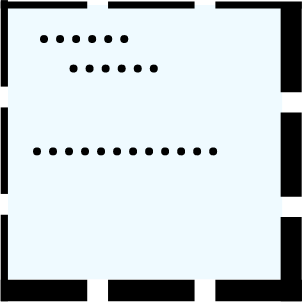Machine Learning Fails? That's a GOOD Thing!
Table of contents
-
Introduction
-
Let's start with the basics
-
Why do machine learning fails?
-
Failures aren't just mistakes
-
Real-world examples
-
Start with high-quality data
-
Wrapping It Up
Let's start with the basics
Why do machine learning fails?
Now, let's talk about why machine learning models fail. There are several reasons, and understanding these can help us avoid common pitfalls.
One major reason is poor data quality. If the data we provide is inaccurate, incomplete, or biased, the model will learn incorrectly. Imagine trying to teach a child with a textbook full of errors – they would end up with many misconceptions.
Overfitting happens when a model learns the training data too well, including its noise and outliers. This is like memorizing answers to a test rather than understanding the underlying concepts. The model performs well on training data but poorly on new, unseen data.
Underfitting is the opposite. It occurs when a model is too simple to capture the underlying patterns in the data. This is akin to not studying enough for an exam, resulting in poor performance on both training and new data.
Sometimes, models fail because they aren't aligned with real-world scenarios. For instance, a model trained to recognize handwritten digits might fail when presented with new styles of writing it hasn't seen before.
Failures aren't just mistakes
Failures aren't just mistakes; they're learning opportunities. Each failure provides valuable feedback that can be used to improve the model.
Consider learning to ride a bike. You might fall several times, but each fall teaches you something about balance and control. Similarly, each failure in a machine learning model teaches us about its limitations and areas for improvement.
Machine learning is an iterative process. You build a model, test it, learn from its failures, and then refine it. This cycle of continuous improvement is what leads to robust and reliable models.
Feedback is crucial. Just like in school, when you get a question wrong and study harder to understand it better, a machine learning model uses feedback from its mistakes to adjust and improve.
Real-world examples
Let's look at some real-world examples of machine learning failures and the lessons learned from them.
Amazon's hiring algorithm was found to be biased against women. The model was trained on resumes submitted over a ten-year period, most of which came from men. As a result, it learned to favor male candidates. This failure highlighted the importance of ensuring diversity and fairness in training data.
Google Flu Trends aimed to predict flu outbreaks by analyzing search queries. Initially, it showed promise, but it later overestimated flu prevalence. This taught us that even with big data, models can go wrong if they rely too heavily on certain patterns without considering external factors.
During the COVID-19 pandemic, many face recognition systems struggled to identify people wearing masks. This failure led to improvements in the technology, making it more adaptable to new conditions.
Tesla's autopilot has had several high-profile failures, including misidentifying objects on the road. These incidents have pushed the company to continuously improve its systems and highlight the importance of safety in AI applications.
Start with high-quality data
To make our models better, we need to start with high-quality data. This means cleaning the data, removing inaccuracies, and ensuring it represents the problem space well.
Regularly test and validate your models. This is like regular health check-ups for humans. It helps catch issues early and ensures the model remains accurate over time.
Use diverse data to train your models. Diversity in data helps the model learn better and reduces biases. It's like exposing a student to a variety of subjects to make them well-rounded.
Keep monitoring your models even after deployment. The world changes, and so should your models. Regular updates based on new data and feedback are essential.
Encourage experimentation. Try different algorithms, parameters, and techniques. Sometimes, unconventional approaches can yield the best results.
Wrapping It Up
We learned that machine learning failures happen due to poor data, overfitting, underfitting, or misalignment with real-world scenarios. But these failures are valuable learning opportunities that drive improvement and innovation.
Failures = Feedback. Use them to improve and innovate.
Want to talk about your project idea or get help finding the right one?
I offer a free 30-minute strategy call to help you:
- Get clarity on your goals
- Understand how real-world projects can unlock your next step
- See if the Accelerator is the right fit for you
Spots are limited, I work with a small number of mentees at a time.
Latest from our blog


